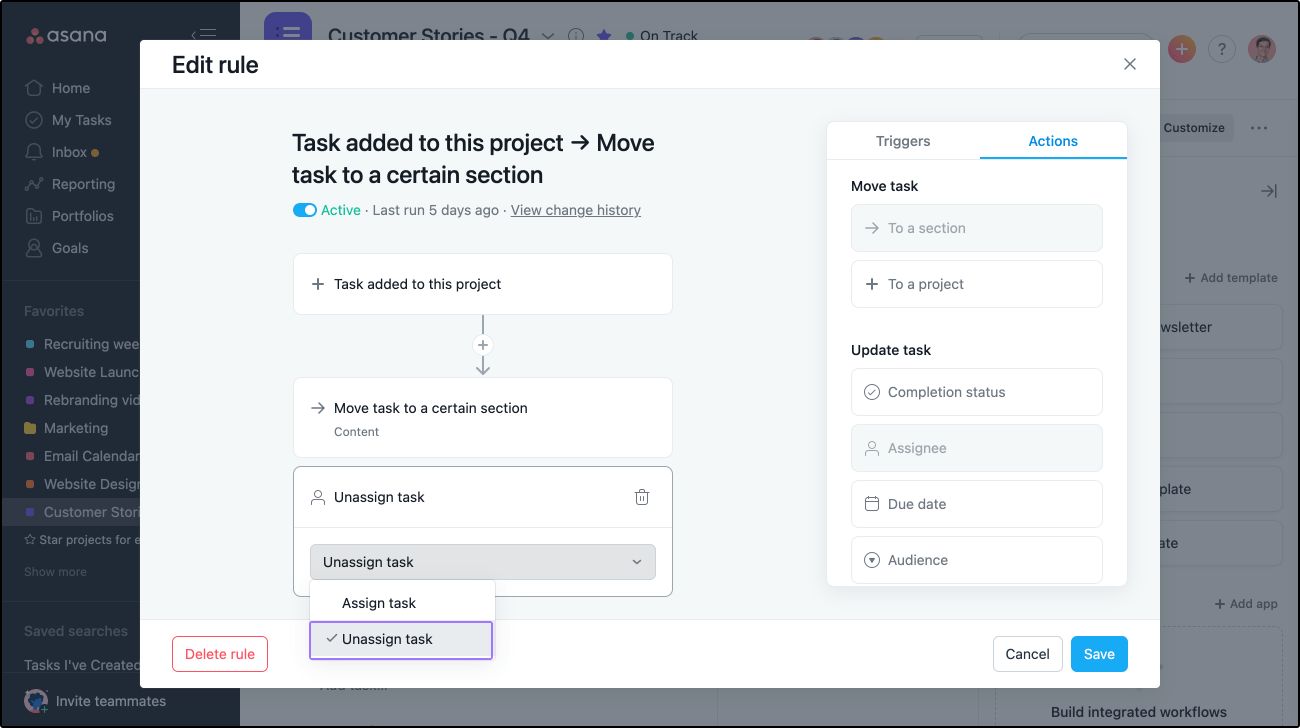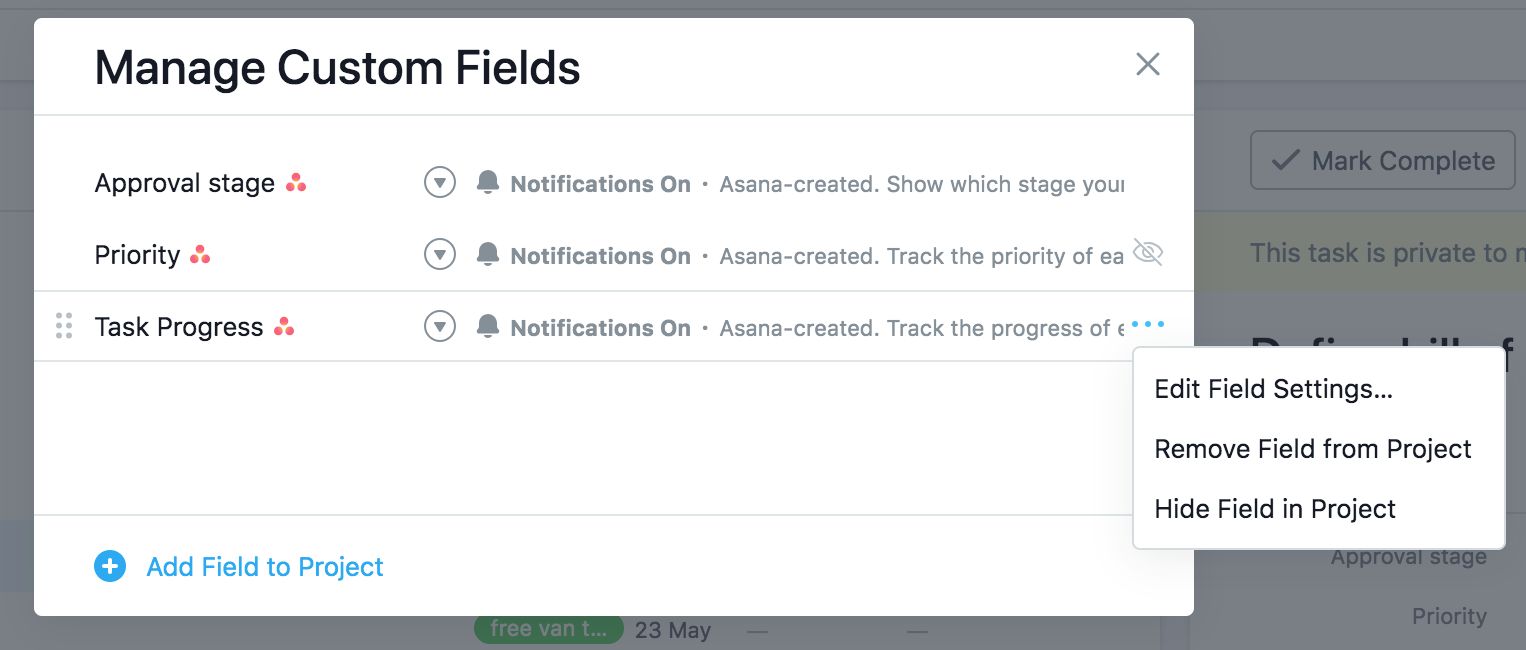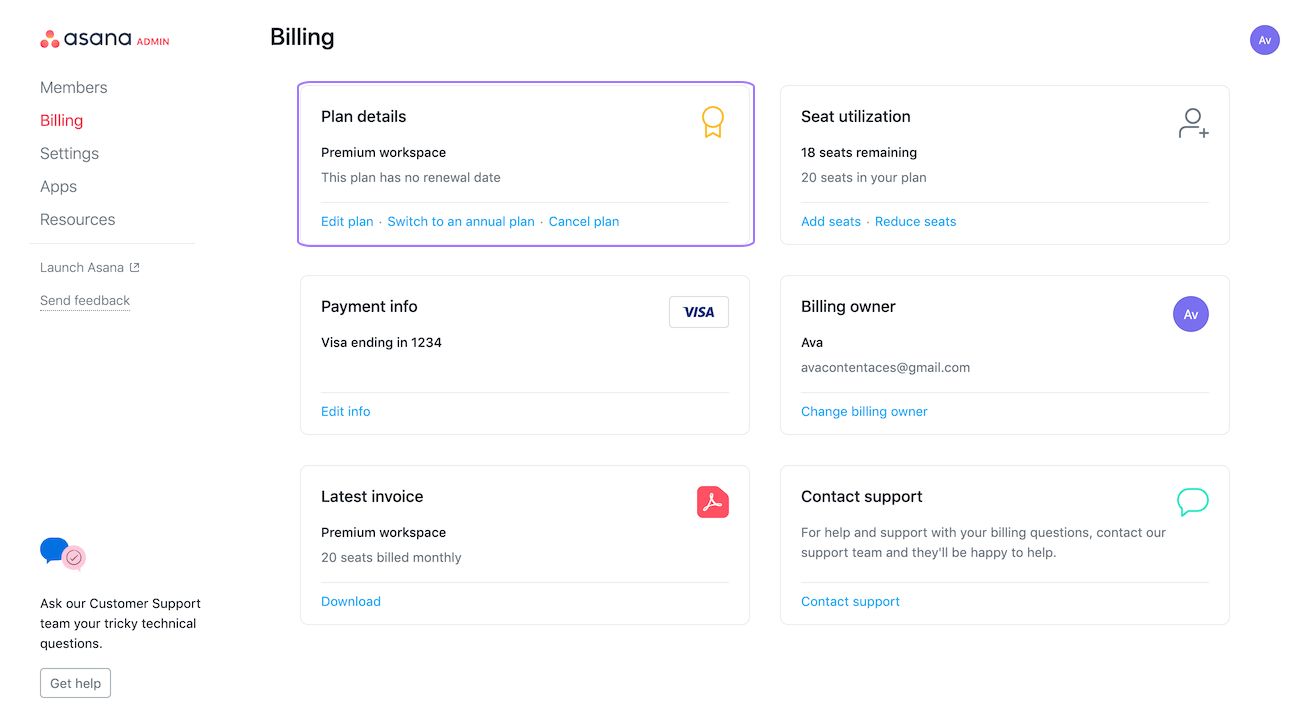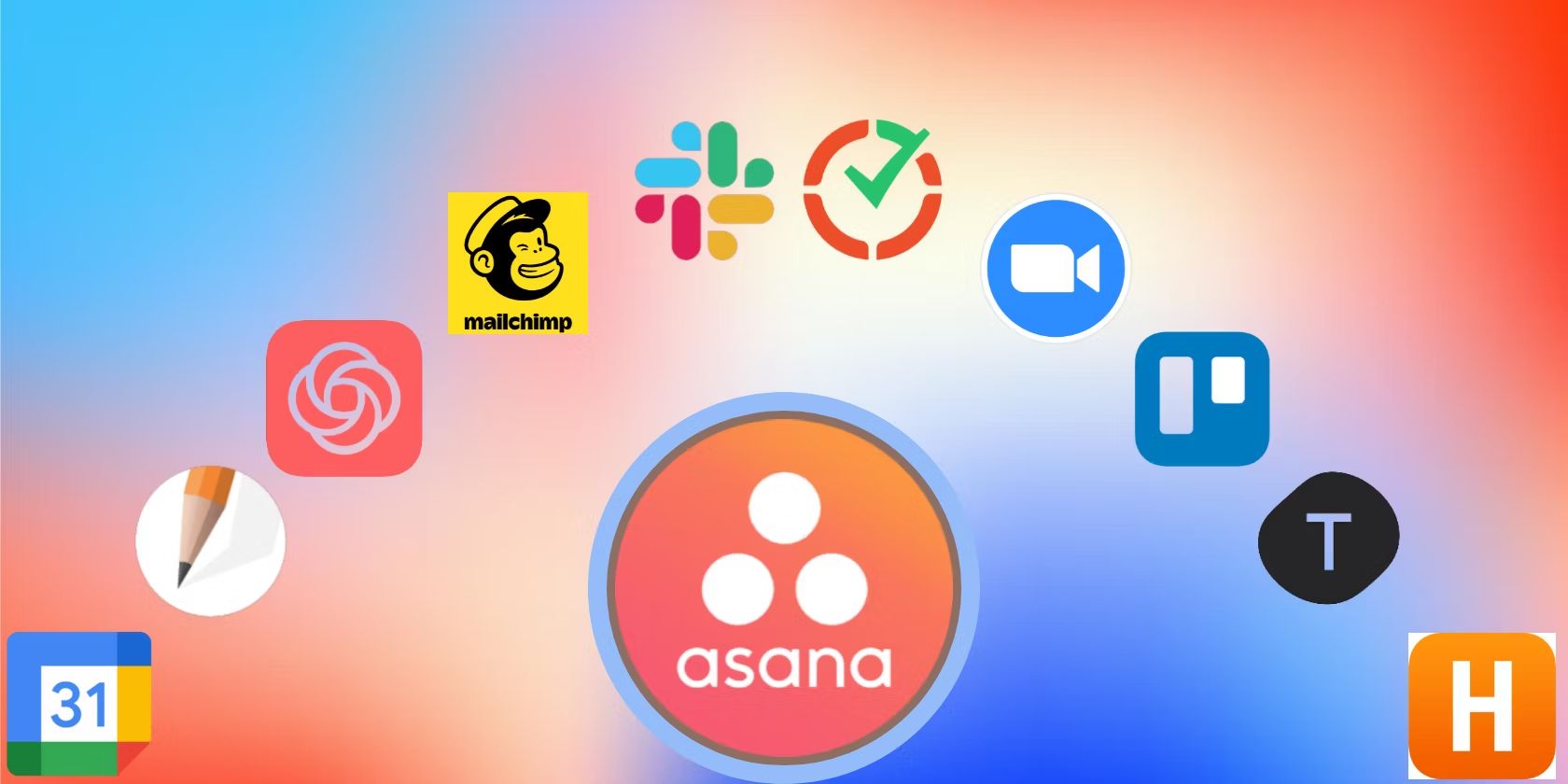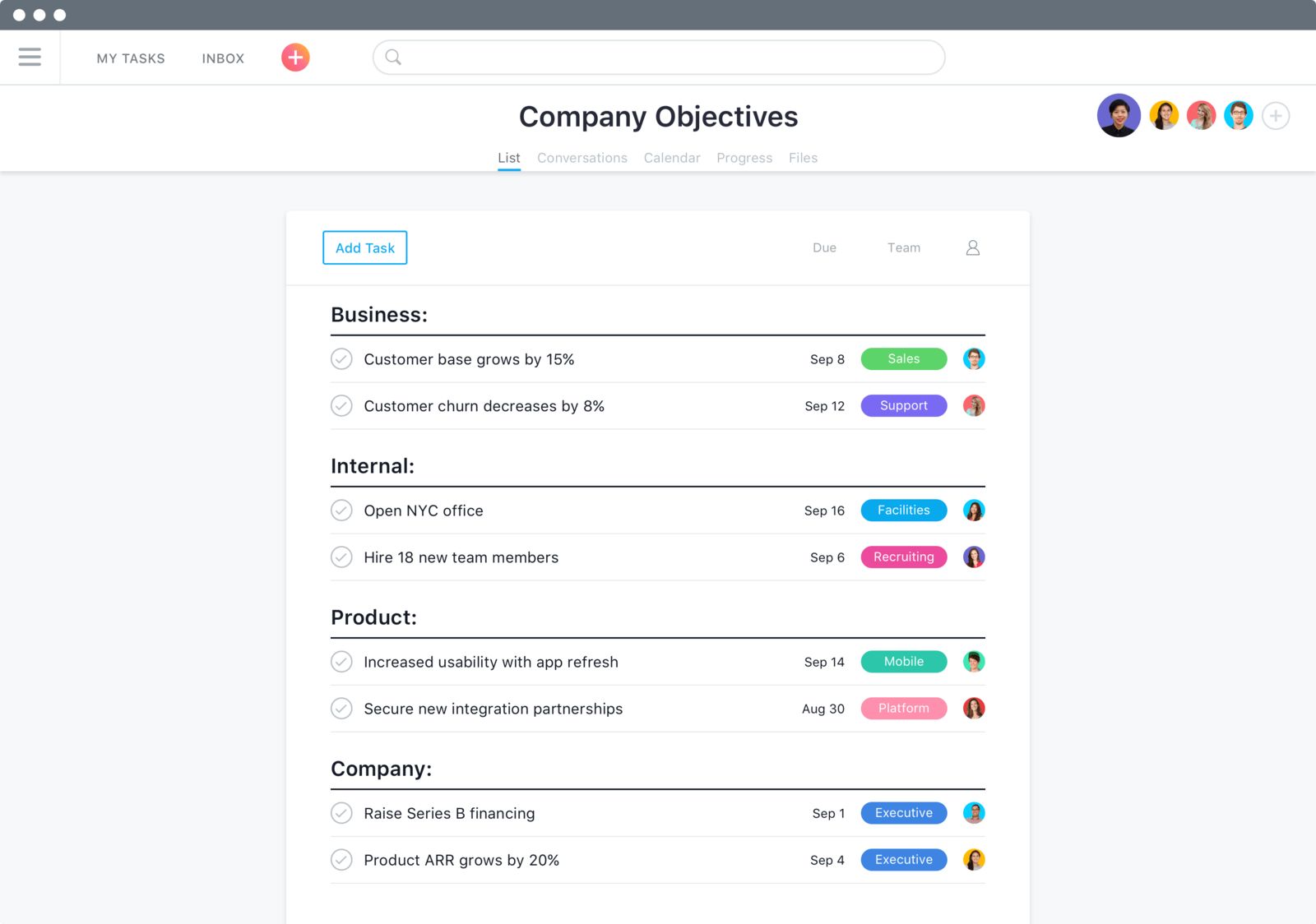Introduction
Welcome to this guide on how to add someone to Asana. Asana is a powerful project management tool that allows teams to collaborate and stay organized. Whether you’re working on a small project or managing a large team, adding new members to your Asana workspace is essential for effective communication and task delegation.
In this step-by-step guide, we will walk you through the process of adding someone to Asana. We will cover everything from creating projects to assigning tasks and adjusting member permissions. By the end of this guide, you’ll be equipped with the knowledge to onboard new team members seamlessly into your Asana workspace.
If you’re new to Asana, you may wonder why it is a popular choice for project management. Asana offers a user-friendly interface that simplifies task management and fosters collaboration. It allows you to create projects, set deadlines, assign tasks, and track progress all in one centralized platform. With the ability to add members to projects, you can streamline communication and ensure everyone is on the same page.
Whether you want to invite a new team member to an existing project or start a fresh collaboration, Asana makes it easy to add and manage members. You can assign tasks, exchange comments, and share files, ensuring that everyone involved has access to the necessary information. This collaboration empowers teams to work together efficiently, regardless of their physical location.
The process of adding someone to Asana is straightforward, but it’s important to follow the steps carefully to ensure a smooth onboarding experience. In the subsequent sections, we will guide you through each step, covering all the necessary details to successfully add a new member to Asana.
Step 1: Sign in to your Asana account
The first step to adding someone to Asana is to sign in to your Asana account. If you don’t already have an account, you can sign up for a free one on the Asana website. Once you’re signed in, follow these steps:
- Open your web browser and navigate to the Asana website.
- Click on the “Sign In” button located at the top right corner of the page.
- Enter your Asana email address and password in the appropriate fields.
- Click on the “Sign In” button to access your Asana account.
Once you’re signed in, you will have access to your Asana workspace, where you can manage your projects and collaborate with your team members.
It’s important to note that Asana also offers mobile apps for both iOS and Android devices. If you prefer to use the mobile app, you can download it from the respective app stores and sign in using your Asana account credentials.
By signing in to your Asana account, you ensure that you have the necessary permissions and access to add new members to your projects. Without signing in, you won’t be able to navigate through the Asana interface and perform the necessary actions to add someone successfully.
So, before moving on to the next step, make sure you have signed in to your Asana account. With your account ready, let’s proceed to the next section to learn how to create a project in Asana.
Step 2: Create a project
Once you’re signed in to your Asana account, the next step is to create a project. Projects in Asana act as containers for all the tasks and information related to a specific goal or initiative. Follow these steps to create a project:
- On the left-hand sidebar, click on the “+ Create” button.
- Select “Project” from the dropdown menu.
- Enter a name for your project in the designated field. Choose a descriptive name that reflects the purpose or objective of the project.
- Optionally, you can add a project description to provide additional context or instructions for the project.
- Click on the “Create Project” button to create your project.
Once you’ve created your project, it will appear on the left-hand sidebar under the “My Tasks” section. You can click on the project name to access the project and view its details.
Creating a project allows you to organize your tasks and collaborate effectively with your team. Within a project, you can create tasks, assign due dates, add attachments, and communicate with project members.
It’s important to note that you can create multiple projects within your Asana workspace to represent different initiatives or workflows. This flexibility allows you to keep your tasks organized and separated based on their respective goals or deliverables.
Now that you’ve created your project, it’s time to move on to the next step and learn how to locate the project members section, where you can add new members to collaborate on the project.
Step 3: Locate the project members section
After creating a project in Asana, the next step is to locate the project members section. This section is where you can manage the team members who will be collaborating on the project with you. Follow these steps to find the project members section:
- Open the project you created by clicking on its name in the left-hand sidebar.
- Once inside the project, you’ll see a menu bar at the top of the page. Look for the “Members” tab or icon; it may vary depending on your Asana workspace settings.
- Click on the “Members” tab or icon to access the project members section.
After clicking on the “Members” tab, you will be able to view and manage the existing project members. Here, you can see the list of team members who are already part of the project. You may also see the project owner or creator listed as the project lead.
Additionally, the project members section allows you to add or remove team members from the project, adjust their permissions, and control their level of access to tasks and information.
Locating the project members section is crucial for adding new members and ensuring that the right individuals have access to collaborate on the project. Now that you’ve located the project members section, let’s move on to the next step and learn how to add a new member to the project.
Step 4: Add a new member to the project
Once you’ve located the project members section in Asana, you’re ready to add a new member to the project. Adding new members allows you to expand the collaboration on the project and ensure that everyone involved has access to the necessary tasks and information. Follow these steps to add a new member to the project:
- In the project members section, look for the “Add Members” button.
- Click on the “Add Members” button to initiate the process of adding a new member.
- A pop-up window will appear with a search bar. Enter the name or email address of the person you want to add to the project.
- As you type, Asana will search for matching members from your Asana contacts or workspace members.
- Select the appropriate person from the search results and click on their name to add them as a member.
Once you’ve added a new member to the project, they will receive a notification informing them that they’ve been added to the project. They will then have access to the project tasks, discussions, attachments, and any other information relevant to the project.
It’s important to note that when you add a new member to a project, they become part of the project’s team and will have visibility into the project and its contents. This allows them to collaborate with other team members, contribute to discussions, and receive assignments.
By adding a new member to the project, you ensure that the right individuals are involved in the collaboration and have access to the project’s tasks and information. Now that you’ve successfully added a new member to the project, let’s move on to the next step and learn how to invite the person to join Asana if they’re not already a user.
Step 5: Invite the person to join Asana (if necessary)
If the person you added to the project is not already a user of Asana, you will need to invite them to join the platform. By inviting them, they will receive an email with instructions on how to create an Asana account and gain access to the project. Follow these steps to invite someone to join Asana:
- In the project members section, locate the name of the person you added to the project.
- Next to their name, you’ll see a button or icon that indicates their invitation status.
- Click on the button or icon to open the invitation options.
- In the invitation options, click on the “Invite to Asana” button.
- Asana will generate an invitation email containing the necessary instructions for the person to create their Asana account.
- Make sure the email address of the person you’re inviting is correct, and click “Send Invitation”.
Once the invitation email is sent, the person will receive it in their inbox. They will need to follow the instructions in the email to create their Asana account. Once they’ve created their account, they will automatically be added to the project they were invited to.
Inviting someone to join Asana allows them to participate in the project’s collaboration, access project tasks, and contribute to discussions. It ensures that the person can effectively interact with the project and stay up to date with the team’s progress.
It’s important to note that the invitation email includes instructions on how to create an Asana account, so the person you’re inviting doesn’t need prior knowledge of the platform. Asana provides a user-friendly process for creating an account, which ensures a seamless onboarding experience for new users.
Now that you’ve invited the person to join Asana, they can create their account and gain access to the project. In the next step, we will explore how to assign tasks to the new member and delegate responsibilities effectively.
Step 6: Assign tasks to the new member
Now that you’ve added the new member to the project in Asana, the next step is to assign tasks to them. Assigning tasks ensures that responsibilities are distributed among team members and everyone knows what they need to work on. Here’s how you can assign tasks to the new member:
- Open the project you created and navigate to the task list or board view.
- Identify the task that you want to assign to the new member. If the task doesn’t exist yet, create a new task by clicking on the “+ Add Task” button.
- Click on the task to open its details and edit view.
- In the task details view, look for the assignee section. It may be labeled as “Assignee” or “Assigned to”.
- Click on the assignee field and select the new member’s name from the dropdown menu.
- Optionally, you can set a due date, add a description, attach files, and add any other relevant details to the task.
- Once you’ve filled out the necessary information, click “Save” or “Done” to assign the task to the new member.
After assigning the task, the new member will receive a notification that they have been assigned a task. They will be able to view the details of the task, including the due date, description, and any attachments.
Assigning tasks to the new member ensures that they have a clear understanding of their responsibilities and can contribute effectively to the project. It allows for efficient task management and progress tracking.
It’s important to communicate with the new member about the assigned tasks to provide any additional context or instructions. Asana provides features like task comments and attachments, which make it easy to collaborate and exchange information with team members.
Now that you’ve successfully assigned tasks to the new member, you can move on to the next step and learn how to adjust the member’s permissions in Asana, if necessary.
Step 7: Adjust member permissions (optional)
Once you’ve added a new member to your Asana project, you have the option to customize their permissions. Adjusting member permissions allows you to control what actions they can perform within the project. Here’s how you can adjust member permissions:
- In the project members section, locate the name of the member whose permissions you want to adjust.
- Next to their name, you’ll see a button or icon that indicates their permission level.
- Click on the button or icon to open the permission options.
- Asana provides different permission levels, such as “Member,” “Editor,” and “Guest.” Choose the appropriate permission level for the member.
- Member: This is the default permission level for project members. They can view, comment, and complete tasks assigned to them.
- Editor: Editors have additional privileges, such as the ability to create and edit tasks, change due dates, and add other members to the project.
- Guest: Guests have limited access to the project and can only view tasks assigned to them. They cannot make changes or manipulate project settings.
It’s important to choose the appropriate permission level based on the member’s role and responsibilities within the project. This ensures that they have the necessary access and powers to contribute effectively without compromising project integrity.
Adjusting member permissions gives you control over the project’s security and privacy. You can customize access levels for different team members based on their requirements and involvement in the project.
Now that you have the option to adjust member permissions, keep in mind that it’s essential to strike a balance between granting enough access for collaboration while maintaining appropriate security measures. By customizing member permissions, you can create a smooth workflow and maintain control over your project.
In the next step, we will explore how to communicate and collaborate with the new member in Asana, ensuring effective teamwork and progress.
Step 8: Communicate and collaborate with the new member
Now that you’ve added a new member to your Asana project, it’s essential to establish effective communication and collaboration. Asana provides several features that allow you to communicate and work together seamlessly. Follow these guidelines to collaborate effectively with the new member:
- Task Comments: Use task comments to communicate directly on specific tasks. You can ask questions, provide updates, or offer feedback. This helps keep all relevant discussions organized and easily accessible to all project members.
- Notifications: Asana sends notifications to project members whenever there are updates or changes to tasks. Encourage the new member to keep their notification settings up to date so that they receive real-time updates and stay informed about project developments.
- Attachments: Share relevant files and documents by attaching them to tasks. This ensures that everyone has access to the necessary resources and reduces the need for separate file sharing platforms.
- Project Conversations: Use the project’s conversation feature to have discussions, brainstorm ideas, or provide general updates. This acts as a central hub for team communication and encourages collaboration and transparency.
- Shared Calendars: Utilize Asana’s calendar view to keep track of project deadlines, milestones, and events. The shared calendar allows all project members to stay aware of upcoming tasks and due dates.
- Meetings and Video Calls: If needed, you can integrate Asana with other communication tools like Zoom or Microsoft Teams for video calls or meetings with the new member. This helps facilitate real-time discussions and enables face-to-face communication, even remotely.
Effective communication and collaboration are crucial for the success of any project. Encourage team members, including the new member, to actively participate in discussions, offer ideas, and provide updates in a timely manner. By fostering a culture of open communication and collaboration, you can create a productive and efficient working environment.
Asana’s features are designed to enhance team collaboration and streamline project management. By leveraging these tools and encouraging the new member to actively participate, you can ensure that the project progresses smoothly and everyone stays aligned on goals and tasks.
Now that you have successfully learned how to communicate and collaborate with the new member in Asana, you’re on your way to achieving project success. With effective teamwork and coordination, you can accomplish your project objectives efficiently.
Conclusion
Congratulations! You have successfully learned how to add someone to Asana and collaborate effectively on your projects. Asana provides a user-friendly platform for project management and team collaboration, allowing you to streamline communication, assign tasks, and track progress all in one place.
Throughout this guide, we explored the step-by-step process of adding someone to Asana. From signing in to your account and creating a project, to locating the project members section and adding new members, you gained the knowledge to onboard team members seamlessly.
We also covered how to invite someone to join Asana if they are not already a user, giving you the tools to expand your team’s collaboration. Additionally, we discussed the importance of task assignment, adjusting member permissions, and effective communication to ensure a smooth workflow and successful project outcomes.
Remember, Asana offers various features like task comments, notifications, attachments, and shared calendars to facilitate communication and collaboration. Encourage active participation from team members, including the new member, and leverage these tools to foster open discussions and keep everyone informed.
By following these steps and utilizing Asana’s features, you can create a productive and efficient work environment, enabling your team to achieve their project goals. Happy collaborating!











